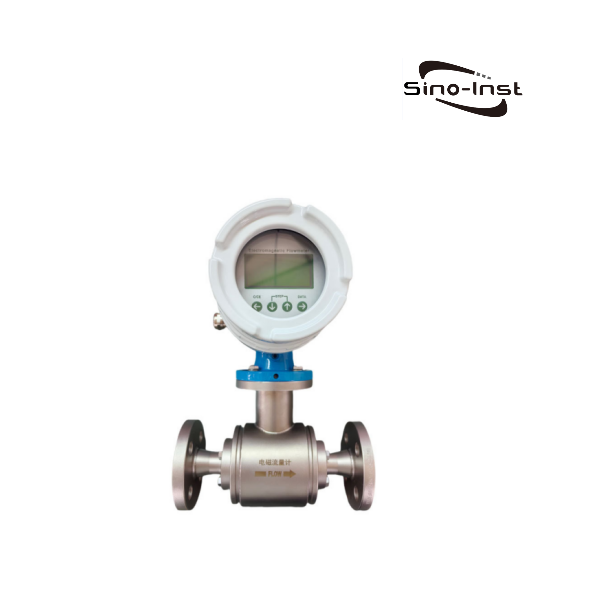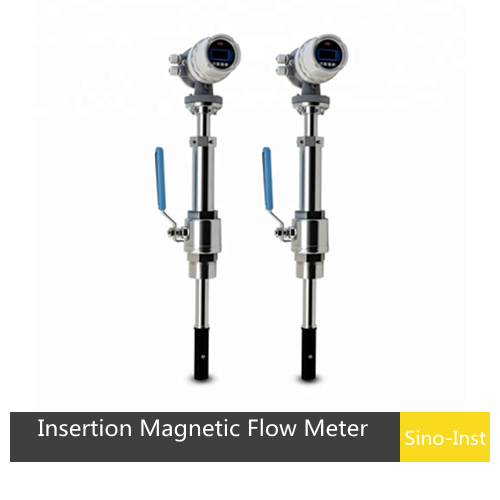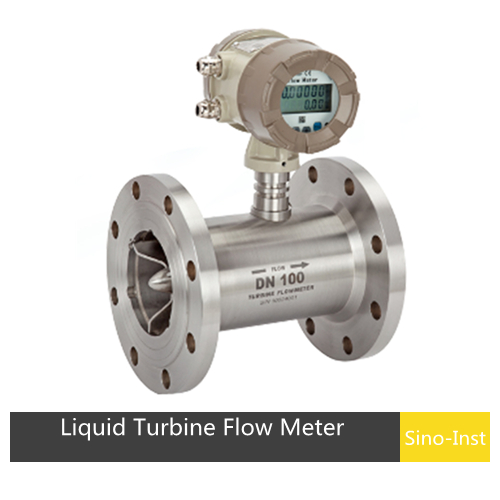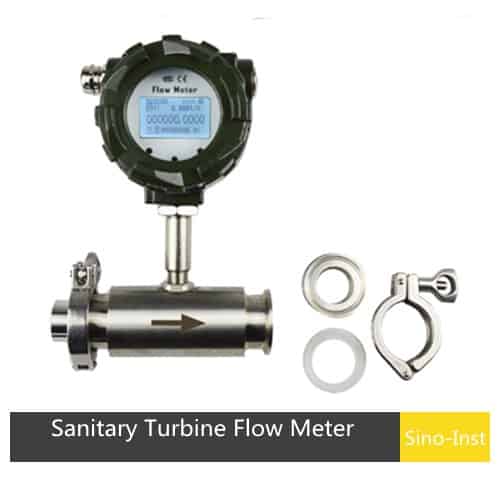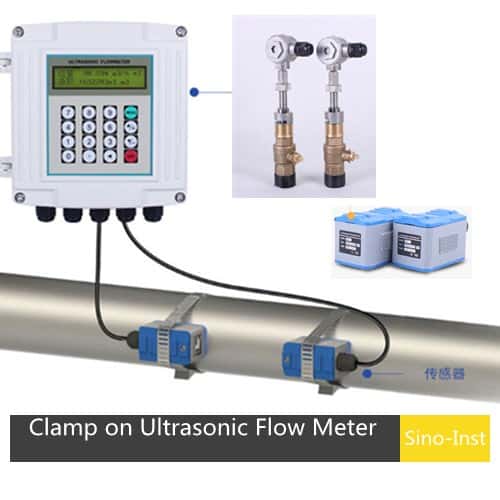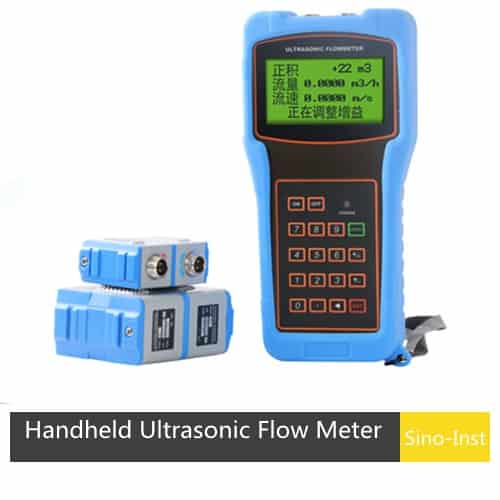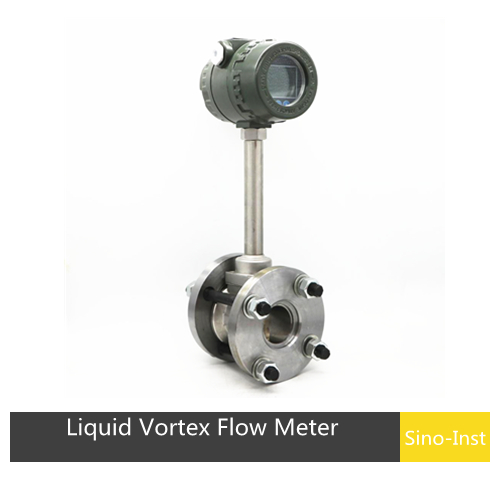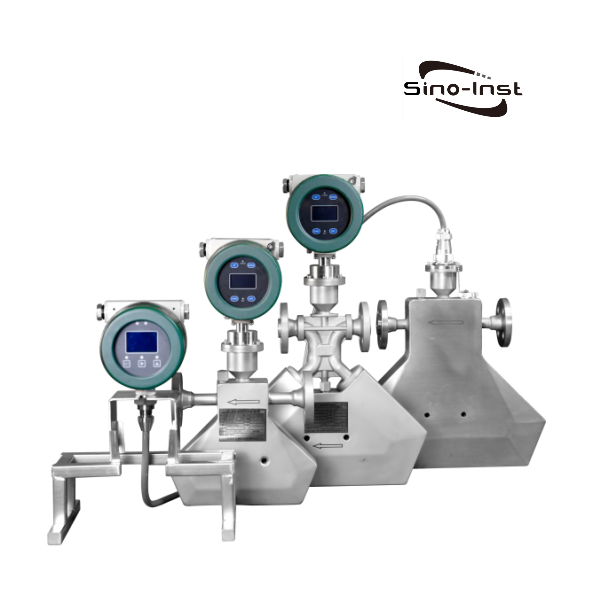The Magnetic Water Flow Meter is suitable for measuring various aqueous solutions with a conductivity greater than 5μs/cm. These include domestic water, industrial water, raw water, groundwater, municipal sewage, industrial wastewater, treated neutral pulp, and pulp slurry.
Based on Faraday’s law of electromagnetic induction, electromagnetic flowmeters can measure water flow rate, flow velocity, and accumulated flow, contributing to water resource management.
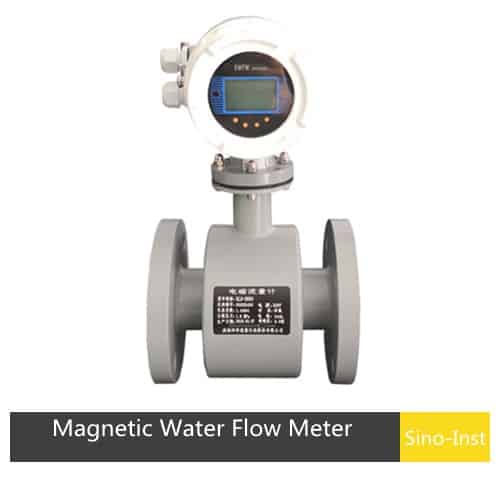
| Diameter | DN6~DN2200mm |
| Accuracy | 0.5% to 2.0% of reading |
| Temp. range | <60℃ |
| Flow rate | 0.3~10m/s |
| Electrode | 316,HastalloyB(HB),HastalloyC(HC),Titanium(Ti),Tantalum(Ta),Platinum(Pt) |
| Protection proof | IP65(compact type),IP67,IP68(suitable for remote type) |
Features
The SI-3103 Intelligent Magnetic Water Flow Meter demonstrates significant advantages in water measurement.
First, electromagnetic flowmeters offer high measurement accuracy and stability, meeting the precise flow rate, velocity, and direction requirements of reclaimed water measurement.
Second, they are highly adaptable and can be used to measure reclaimed water with varying water qualities and flow rates.
Furthermore, electromagnetic flowmeters offer advantages such as a simple structure and easy maintenance, reducing operational costs and maintenance complexity.
- High accuracy
- Low cost
- Little to no pressure loss
- Readings that are unaffected by changes in density or viscosity
- No susceptibility to bearing wear or other mechanical wear-and-tear issues
- Moisture proof and waterproof performance is good. Suit for setting up and being used underground or wet environments;
- Compare with other flowmeter, its advantage : big measurement range , low demand in straight pipe, high accuracy;
- Low power consumption, one set flowmeter power consumption less than 20W.
Specifications
| SI-3103 Electromagnetic flow meter | |
| Medium | Acid, alkali, salt and other corrosive medium in chemical industry |
| Diameter | DN6~DN2200mm |
| Accuracy | ±0.5% |
| Medium temperature | <60℃ |
| Nominal pressure | GB 0.6MPa (DN700~DN2200) |
| GB 1.0MPa (DN200~DN600) | |
| GB 1.6MPa (DN6~DN150) | |
| DIN PN16,PN25,PN40,PN63 | |
| JIS10K,20K,40K | |
| ANSI Class150,Class300,Class600, others can be customized | |
| Flow rate | 0.3~10m/s |
| Straight pipe required | Upstream ≥5DN,downstream ≥3DN |
| Electrode | HastalloyB(HB),HastalloyC(HC),Titanium(Ti),Tantalum(Ta),Platinum(Pt), |
| Tungsten carbide(WC) (For acid and alkali salt solution) | |
| Installation way | Carbon steel flange (standard), Stainless steel flange(optional) |
| Body material | Carbon steel (standard),Stainless steel(optional) |
| Power supply | 220VAC/24VDC/lithium battery |
| Signal output | Pulse and 4~20mA;(if use lithium battery, without signal output) |
| Communication | RS485,GPRS,Hart |
| Explosion-proof | No |
| Protection proof | IP65(compact type),IP67,IP68(suitable for remote type) |
| Work environment | Ambient temperature:-20~+60℃,Ambient humidity:5%~90% |
| Power | <20W |
Electrode material selection:
| Material | Medium |
| 316L | Domestic water, industrial water, raw water, urban sewage, etc. |
| Hastelloy B (HB) | Sodium hydroxide ammonium hydroxide alkali solution and weak organic acid |
| Hastelloy C (HC) | Oxidizing salt solution (Fe+++, Cu++, seawater) |
| Titanium (Ti) | 1. Salt solution (chloride, sodium salt, potassium salt, ammonium salt, sea water, etc.) 2. Alkaline solution (such as concentration less than 50% potassium hydroxide solution) |
| Tantalum(Ta) | 1. Hydrochloric acid, sulfuric acid, oxidizing acid, aqua regia 2. Chlorine dioxide, ferric chloride, hypochlorous acid, sodium cyanide, lead acetate, etc. |
| Platinum (Pt) | Acid, alkali, salt solution |
| Tungsten carbide (WC) | Handled neutral industrial sewage and domestic sewage. Resistant to solid particle interference |
Lining material selection
| Lining material | Linner | Temperature | Suitable medium | Diameter |
| Rubber | Neoprene(CR) | -20~60℃ | Tap water,industrial water,seawater | DN65~DN1600 |
| Natural Rubber(NR) | ||||
| Polyurethane Rubber(PU) | Slurry, paper pulp etc. | DN25~DN500 | ||
| Silicone rubber | -20~180℃ | Water | DN40~DN1600 | |
| Fluoroplastic | PTFE(F4) | -20~120℃ | Corrosive acid-base salt liquid | DN10~DN1600 |
| Teflon F46(FEP) | -40~160℃ | Corrosive acid-base salt liquid | DN10~DN200 | |
| PFA | -40~160℃ | Corrosive acid-base salt liquid | DN10~DN300 |
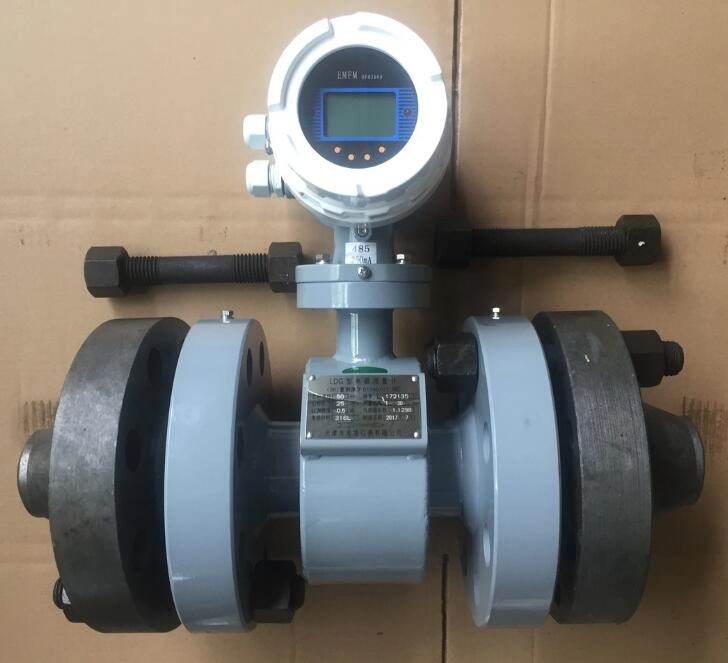
Order Guide
In addition to regular products, we support customization
| SI-3103- | Note | |||||||||||||
| Diameter | DNXX | DN6~DN2200(mm) | ||||||||||||
| Structure | F | Remote type (standard with 10m cable) | ||||||||||||
| Y | Compact type | |||||||||||||
| Electrode | S | 316L | ||||||||||||
| T | Titanium(Ti) | |||||||||||||
| D | Tantalum(Ta) | |||||||||||||
| C | Hastalloy C(HC) | |||||||||||||
| P | Platinum iridium alloy | |||||||||||||
| Lining material | X | Chloroprene rubber (CR) Suitable for tap water, | ||||||||||||
| industrial water, sea water, etc liquid | ||||||||||||||
| J | Polyurethane rubber (PU) Suitable for pulp, pulp, etc liquid | |||||||||||||
| E | Polytetrafluoroethylene (PTFE) | |||||||||||||
| A | PFA | |||||||||||||
| Body material | CS | Carbon steel | ||||||||||||
| S4 | SUS304 | |||||||||||||
| Protection class | L0 | IP65(compact type) | ||||||||||||
| L1 | IP67(remote type) | |||||||||||||
| L2 | IP68(remote type) | |||||||||||||
| Power supply | 1 | 110~240V AC | ||||||||||||
| 2 | 24V DC | |||||||||||||
| 3 | Lithium battery(no signal output) | |||||||||||||
| Signal output | N | No output | ||||||||||||
| N1 | 4-20m/pulse output | |||||||||||||
| Communication | H | HART protocol | ||||||||||||
| R1 | MODBUS RS485 | |||||||||||||
| G | GPRS | |||||||||||||
| With grounding ring | 0 | Without grounding ring | ||||||||||||
| 1 | With grounding ring | |||||||||||||
| Nominal pressure | D1 | DIN PN16 | ||||||||||||
| D2 | DIN PN25 | |||||||||||||
| D3 | DIN PN40 | |||||||||||||
| D4 | DIN PN63 | |||||||||||||
| J1 | JIS 10K | |||||||||||||
| J2 | JIS 20K | |||||||||||||
| J3 | JIS 40K | |||||||||||||
| A1 | ANSI Class150 | |||||||||||||
| A2 | ANSI Class300 | |||||||||||||
| A3 | ANSI Class600 | |||||||||||||
| O | Others | |||||||||||||
| Cable length | /xxx | Unit: m | ||||||||||||
FAQ
How Does a Magnetic Flow Meter Work?
Electromagnetic flowmeters are widely used in industrial flow measurement. Their measurement principle is based on Faraday’s law of electromagnetic induction.
When a conductive fluid flows through the measuring tube of an electromagnetic flowmeter, the excitation coil inside the tube is energized, generating a constant magnetic field.
The conductive fluid cuts through the magnetic lines of force, generating an induced electromotive force (EMF) in the fluid according to Faraday’s law of electromagnetic induction. This induced EMF is captured by electrodes on the inner wall of the measuring tube and transmitted to the converter section of the meter.
The converter amplifies and corrects the induced EMF and converts it into flow rate data using a specific formula. The flow rate data is ultimately displayed on the meter or uploaded to a host computer system.
Read more about: Magnetic Flowmeter Technology
Are Magnetic Flow Meters Accurate?
Yes, electromagnetic flowmeters typically offer an accuracy of ±0.5%. They are suitable for applications requiring extremely high flow measurement, such as the chemical and pharmaceutical industries.
The accuracy of an electromagnetic flowmeter is not only influenced by its design and manufacturing quality, but also by multiple factors, such as the flow rate, temperature, and pressure of the fluid, as well as the meter’s installation conditions and operating environment. Therefore, when selecting an electromagnetic flowmeter, in addition to considering its accuracy level, other factors should be considered to ensure accurate and reliable measurement results.
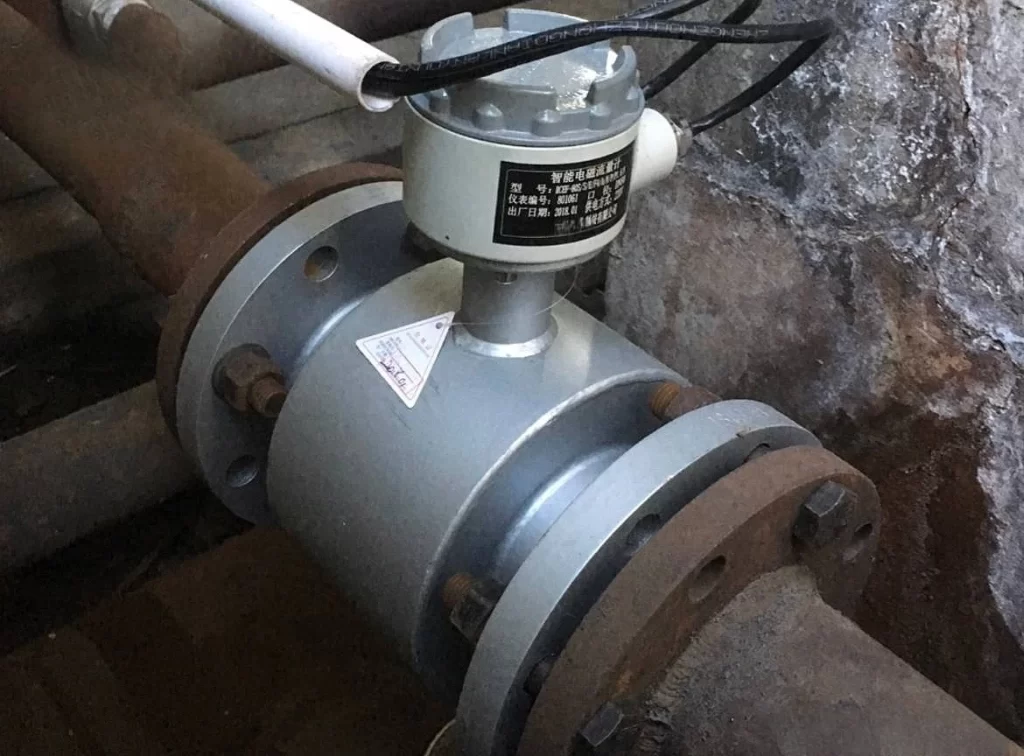
Can Electromagnetic Flowmeter Measure Pure Water?
Electromagnetic flowmeters cannot be used for pure water flow measurement. This is because the electrical conductivity of pure water is very low, making electromagnetic flowmeters ineffective.
Turbine, vortex, orifice plate, rotor, ultrasonic, and mass flowmeters can all measure flow. The difference is that the former have flow barriers inside the measuring tube, resulting in pressure loss. Ultrasonic flowmeters, on the other hand, are installed externally and have no internal flow barriers. Mass flowmeters can also measure flow and are very accurate, but they are expensive.
Taking all factors into consideration, if you prefer low cost, a metal rotor flowmeter is recommended, but the disadvantage is poor accuracy. If you require high accuracy, a mass flowmeter is recommended, but the disadvantage is its high price. For moderate considerations, turbine, vortex, and ultrasonic flowmeters are all suitable.
What Are the Advantages and Disadvantages of a Magnetic Flow Meter?
Advantages of electromagnetic flowmeters:
- No flow-obstructing components in the measuring tube, no pressure loss, and relatively low straight pipe length requirements;
- High measurement accuracy, strong stability, and strong resistance to vibration interference;
- Measurement is unaffected by changes in fluid density, viscosity, temperature, pressure, and conductivity;
- A variety of electrodes and linings are available, providing strong resistance to media corrosion.
Disadvantages of electromagnetic flowmeters:
- Flowmeters can only measure the flow rate of liquids with a conductivity greater than 5 μs/m.
- The actual maximum pressure must be less than the rated pressure of the flowmeter.
- Meters cannot measure media such as gas and steam.
- Scale or wear in the flowmeter’s water supply pipe can cause changes in the inner diameter, resulting in measurement errors.
- If the flowmeter is used to measure viscous liquids containing dirt, if the dirt on the electrodes reaches a certain thickness, the instrument’s measurement error may increase.
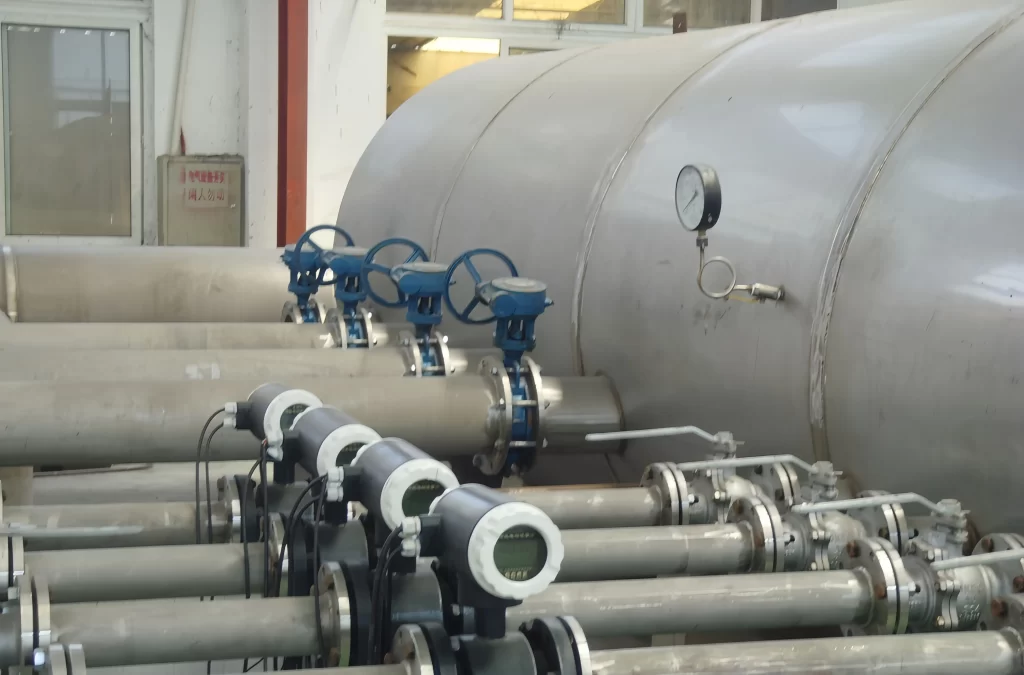
What Is the Best Flow Meter for Water?
Choosing a flow meter for water measurement requires considering several factors, including measurement range, accuracy requirements, operating conditions, and cost. The following are several common flow meters used for water measurement:
- Electromagnetic Flowmeter: Electromagnetic flowmeters are suitable for measuring the flow of conductive liquids (such as water). They offer high accuracy and stability and are unaffected by fluid density, temperature, and pressure. However, it should be noted that electromagnetic flowmeters are not suitable for measuring non-conductive liquids.
- Ultrasonic Flowmeter: Ultrasonic flowmeters are suitable for measuring the flow of various liquids, including water. They provide non-contact measurement, eliminating the need for pipe cutting or fluid contact, and offer high accuracy and reliability.
- Turbine Flowmeter: Turbine flowmeters are suitable for measuring water flow in small to medium flow ranges, offering high accuracy and sensitivity. However, it should be noted that turbine flowmeters may be sensitive to impurities and particulate matter in the water.
- Vortex Flowmeter: Vortex flowmeters are suitable for measuring the flow of liquids (including water) with high accuracy and stability. They can measure a wide range of flow rates and are less susceptible to impurities and particulate matter in the liquid.
- Metal Rotor Flowmeter: Metal rotor flowmeters are commonly used to measure clean, non-crystallizing, and low-viscosity liquids. These media include, but are not limited to, water, oil, and various chemical solutions.
- Mass Flowmeter: Mass flowmeters offer the highest measurement accuracy, reaching 0.1%. However, their purchase cost is higher.
- Oval Gear Flowmeter: Mechanical oval gear flowmeters are an option when there is no power supply at the measurement site.
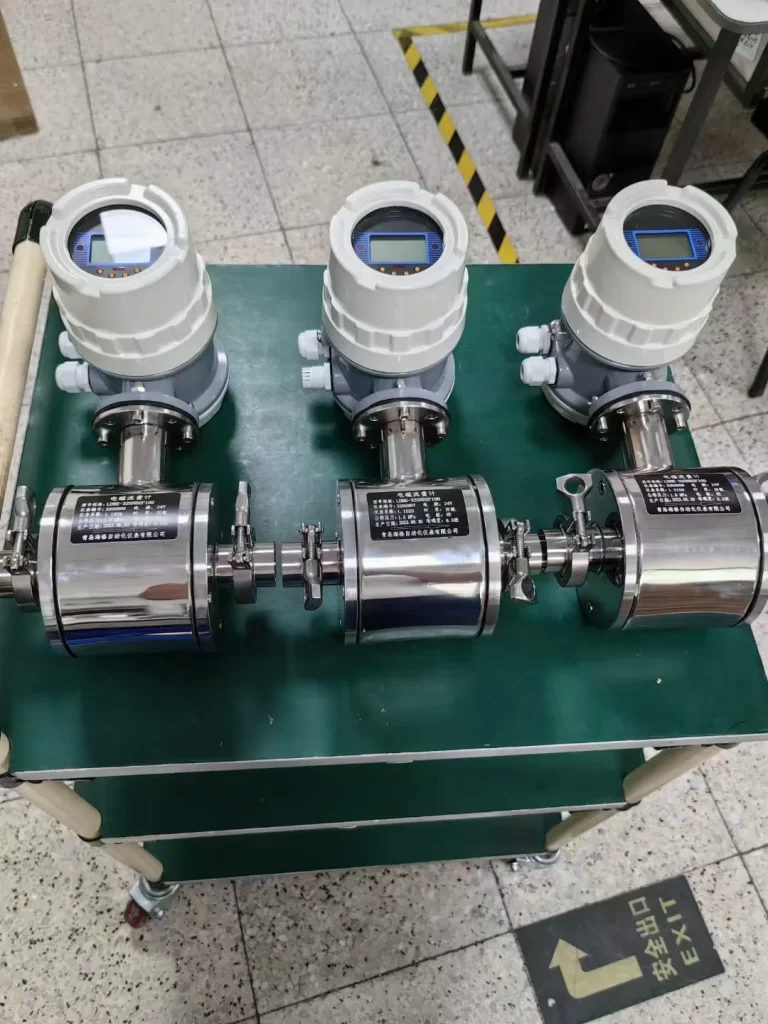
When to Use a Magnetic Flow Meter?
The electromagnetic flowmeter’s measurement principle dictates that it requires only a certain conductivity (typically >5 μS/cm) for stable measurement. Therefore, it is adaptable to a wide range of complex fluids.
Media Containing Impurities/Suspended Matter:
For fluids containing solid particles (such as mud and ore slurry), fibers (such as paper pulp and juice), or bubbles, the electromagnetic flowmeter has no internal throttling or moving parts, preventing clogging, wear, or seizure.
For example, in sewage treatment plant sludge transport and mine slurry pipelines, traditional throttling flowmeters (such as orifice plates and vortex flowmeters) are prone to failure due to impurity accumulation or wear, while electromagnetic flowmeters provide long-term stable operation.
Corrosive Media:
By selecting electrodes made of various materials (such as Hastelloy, titanium, and platinum) and linings (such as polytetrafluoroethylene and rubber), electromagnetic flowmeters are resistant to highly corrosive fluids such as acids, alkalis, and salts (such as sulfuric acid and caustic soda solutions), eliminating the corrosion problem associated with metal instruments.
High Viscosity/Non-Newtonian Fluids:
For non-Newtonian fluids with high viscosity, such as syrups, inks, and coatings, or whose viscosity varies with temperature or flow rate, electromagnetic flowmeters are not affected by viscosity (they are only related to flow rate). However, viscosity-dependent instruments like gear flowmeters are prone to errors.
More Water Flow Meter Types
Water flow meter types are: Electromagnetic (magnetic), Turbine, Ultrasonic, and DP. Coriolis and Oval Gear flow meters can also work for water flow measurement.
Technical Support
Magnetic Water Flow Meters provide powerful support for water resource management. By real-time monitoring and analysis of reclaimed water flow, velocity, and direction, they help ensure the rational allocation and efficient use of water resources, promoting sustainable development.
Sino-Inst’s electromagnetic flow meters, with their accurate measurement capabilities, high stability, and excellent adaptability, play a vital role in water measurement. If you require water flow measurement, please feel free to contact us!
-1.jpg)
